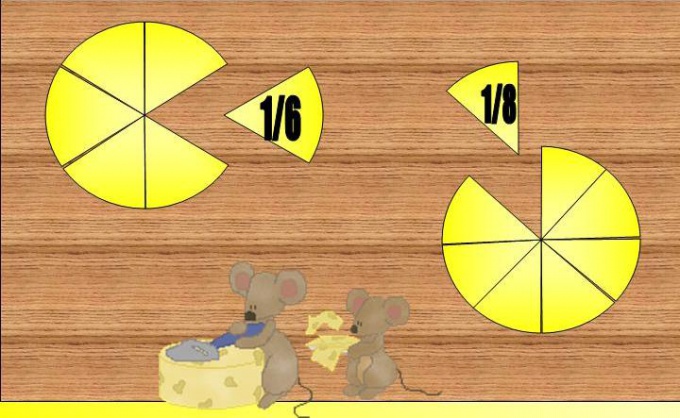You will need
- a sheet of paper
- a pen or pencil
Instruction
1
Fractions with different numerators and denominators cannot be compared without converting them. Fraction can lead to any denominator of a multiple of the denominator of the given fraction. This means that the new denominator should be divided evenly by the denominator of the given fraction. For example, the new denominator of the fraction 3/8 can be a denominator of 32, because 32 is divisible by 8.
2
Divide the new denominator by the old. 32:8 = 4. You got an extra multiplier.
3
To bring the fraction to the new denominator, multiply its numerator and the multiplier by the extra multiplier. For example, if you want to bring the fraction 3/8 to a denominator of 32, multiply both 3 and 8 on the number 4.
4
Now give fractions that you need to compare to a common denominator. To compare two fractions use the common denominator the product of their denominators, as this number will be a multiple of both denominators. That number is called the lowest common denominator. Suppose you need to compare fractions 5/7 and 3/5. First, multiply the denominators. When you multiply 7 5 to get 35. It is the common denominator.
5
Additional multiplier for the fraction 5/7 is the number 5, as 35:7 = 5. Multiply the numerator and denominator by 5. Get 25/35.
6
Additional multiplier for the fraction 3/5 would be the number 7, as 35:5 = 7. Multiply the numerator and denominator by 7. Get 21/35.
7
Now compare the resulting fractions. Greater (lesser) will be the fraction whose numerator is greater (less). 25/35>21/35. Consequently, 5/7>3/5. The problem is solved successfully.
Note
Comparison of fractions written using the comparison signs: a greater than symbol ( > ), "less than" sign (< ) or equal sign (=).
Useful advice
In order to add or subtract fractions with different denominators, the same way bring them to the lowest common denominator and make the necessary calculations.
